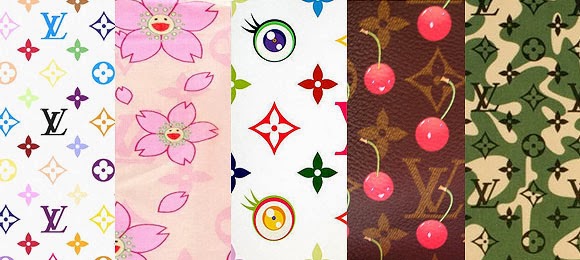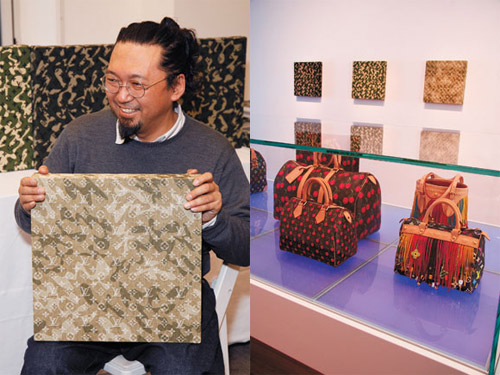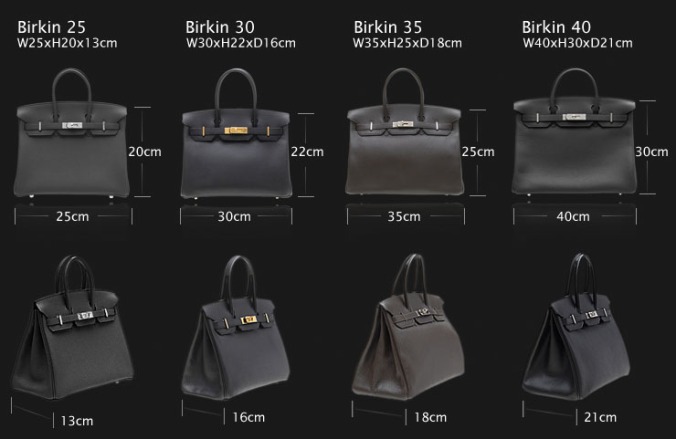It’s safe to say that if you want to buy a Birkin, and you can afford one, it will eventually be yours. In the meantime, the exclusivity — both perceived and real — generates plenty of cultural cachet and continues the cycle of sales.
MIAMI, United States — When Hermès opens its new Miami Design District flagship on Nov. 6, local clients will find a selection of leather goods, fashion, and accessories chosen specifically for them. Every Hermès outpost is run like an independent boutique, with a store director who visits Paris each year to buy pieces he or she believes will appeal to the location’s particular flavour.
But certain items resonate, no matter where in the world they land. Consider the Birkin Sellier 40, the latest version of what a casual observer might call the original It Bag. Crafted out of what is called Hunter cowhide—which holds its shape without much manipulation—the 40-centimeter-long style is unlined, with raw-edge straps, palladium hardware, and a retail price of $14,900.
The Sellier 40 will be available in Miami, although “available” is a relative term. Birkins of all shapes, sizes, and styles still sell out instantly, with wait lists typical of 10 or 15 years ago. The Birkin really holds up, says Robert Chavez, Hermès’s chief executive officer in the U.S. “Customers appreciate the quality, craftsmanship and timeless style.” ‘Elite Sales
Yes, clients are suckers for a solid product that takes 18 to 20 hours to make from start to finish, all done by one craftsperson (who starts by selecting just the right piece of leather or exotic skin for the bag and ends with a series of painstaking quality control tests). But they are also suckers for careful, shadow marketing, high prices, limited supply, and a permanent air of exclusivity. It’s probaby the latter, more than the former, that has kept the Birkin the most elite handbag in the world.
In Hermès’s 2014 fiscal year, sales of leather goods and saddlery reached €1.8 billion ($2 billion), up nearly 13 percent from €1.6 billion in 2013. And in the first quarter of 2015, category sales reached €511 million, a jump of nearly 25 percent from last year’s €410 million. That’s at a time when most luxury brands are struggling globally in the face of changing Chinese and Russian markets and when major currency imbalances between regions has chilled shopping on the higher end.
The 178-year-old company does not report how many Birkins are sold every year, or what percentage of that leather sales figure is attributable to the line. Secrecy and success are intertwined.
Shadow Marketing
Hermès does not market the Birkin through traditional print, online, or television advertising. Instead, the company relies on the bag’s perceived exclusivity and prestige. If the world knew how many bags were churned out every year, the luster would likely dim. The only thing Hermès wants you know about the bag’s availability is that you probably can’t get one.
“Hermès was very smart in not flooding the market with Birkins,” says Mario Ortelli, a luxury goods analyst at Sanford C. Bernstein.
Indeed, an entire chapter in the buzzy new memoir Primates of Park Avenue is dedicated to author Wednesday Martin’s obsession with owning one of these elusive satchels. Those who try often face a months-long waiting list.How to Get a Birkin
“No one can walk in and buy a Birkin ‘from the back,’” says Michelle Goad, CEO of P.S. Dept., a personal shopping app that services 20,000 luxury customers globally. “The key to getting one is to find someone who has a relationship with one of their associates, [which means they’ve] bought one in the past.”
If this sounds a bit like a Catch-22, that’s because it is: To be sold a Birkin, you have to have bought one already. Unless you get lucky.
Very occasionally customers can waltz into an Hermès shop and scoop up a surprisingly available version — the 2009 memoir, Bringing Home the Birkin: My Life in Hot Pursuit of the World’s Most Coveted Handbag, detailed personal shopper Michael Tonello’s experience in doing that very thing — but that’s far from the norm. Instead, you need to snag a spot on an unofficial waitlist. And then wait.
“Think of it like almost being interviewed,” says Goad. “You have to have a purchase history at the store to just get started, then they meet with you, assess how serious you are about spending, and then you go on their list.
“They get deliveries of these bags sporadically every week — we’re talking two units at a time, not full deliveries, so there aren’t any just sitting on shelves. Associates first prioritize the customers with ‘relationships,’ then whatever inventory is left will be open to their wait list.”
P.S. Dept. was recently able to secure a Birkin for a client within one month of her request, which Goad readily admits was a lot of “right time, right place,” noting three- to six-month waits as the norm. Flexibility helped, too. “This client was very open to sizes and colour—she just wanted one of the bags—which made it much easier to get her one.”
Hermès’s Chavez echoes the sentiment on being flexible, although he denies that there is any “specific waitlist.”
“When something comes available, we will call them and invite them to come in and see the bag we have,” he explains. “Sometimes they are willing to be flexible in size or hardware, if they want to accept the bag we are offering. If a client wants to stay specifically with every detail they requested, it will take a bit longer, but they are willing to wait.”Steady Market Share
So it’s also safe to say that if you want to buy a Birkin, and you can afford one, it will eventually be yours. In the meantime, the exclusivity — both perceived and real (from price and specific design details) — generates plenty of cultural cachet and continues the cycle of sales. Along with the dozens of written accounts, a legendary episode of Sex and the City centers on Samantha’s quest to procure the unicorn of handbags.
This sort of free publicity is the best kind available: money-can’t-buy word-of-mouth that puffs up the tightly controlled distribution system.
Meanwhile, the handbag market is constantly changing. Brands at all levels are raising their prices, from Louis Vuitton’s $5,600 Capucines to Céline’s $6,200 lizard box bag. The number of choices has increased, too. Today, Hermès’s competition includes not only Chanel and Dior but also Moynat, Marc Cross, the Row, and so on. While Hermès’s share of the luxury leather goods market has remained steady over the past decade or so — 6 percent in both 2004 and 2013 — research by Exane BNP Paribas suggests that the number of “other” brands competing has increased to 41 percent of total market share in 2013 from 38 percent in 2004. (Louis Vuitton’s market share has decreased to 18 percent in 2013, from 23 percent in 2004.)
Maintaining the Crown
So what’s a category leader like Hermès to do? Offering newness is one strategy, and the horsey leather goods house does tend to introduce a new bag on the runway every other season or so. For Fall 2014, it was the Hazlan, a shoulder bag that can be seamlessly converted into a crossbody, tote, or clutch. At her Fall 2015 debut, the company’s newly appointed women’s creative director, Nadege Vanshee-Cybulski, introduced the Octogone bag, which looks exactly as it sounds. (It’s an octagon.)
But it is the Birkin that remains the crown jewel. Indeed, a version featuring diamond-and-gold hardware recently fetched $223,000 at auction in Hong Kong. So the brand is focusing on offering more and rarer specialized options, all while keeping the quality top-notch. There is the Birkin Shadow, the Birkin Ghillies, the Birkin So-Black, as well as hundreds of color and skin combinations in four standard sizes: 25cm, 30cm, 35cm, and 40cm styles (Store directors are tasked with selecting unique options that will appeal to the store’s local clientele, although Hermès won’t reveal what styles appeal where.)
For the most devoted customers—and by that we mean the biggest spenders — the company offers customization. Sales associates are schooled on the hundreds of available combinations so that serious collectors can easily purchase their dream Birkin. “We do take special orders, but in a small way,” Chavez says. “If we can meet a client’s expectations, we will consider a special order.”Personalized Core
In many ways, customization has always been at the core of the Birkin. The bag, after all, was first made to the specifics of its namesake, actress and singer Jane Birkin, who needed a carryall to handle her Hermès diary. But personalization is just another way to reel in the forever client. If she wants something truly unlike anything anyone else has in the world, she can have it.
In a sense, the company is doubling down on the bag — committing to training 200 new craftspeople across categories each year and continuing to increase production. Hermès points to two new workshops in the Rhône Alpes and Poitou Charentes regions of France as a source for its success in 2014. (Two more new workshops in the Franche-Comté region will open in 2016.) Craftsmen are trained for a minimum of five years and will receive additional training if they are to work with exotic skins.
“Even as it has become more mass, it’s distributed around the world and not very exposed,” says the luxury analyst Ortelli. “You don’t find it in the store. The unofficial waiting list keeps it under control.”Quiet Luxury
As Hermès has increased production, demand has also amazingly increased, thanks to a mix of factors. One is that Asia’s wealthy are less and less interested in logos (a demure Hermès label only appears hidden under the top flap of the Birkin). That goes hand in hand with the global rise of quiet luxury — the idea that refined, minimalist goods speak volumes more without saying as much. For the modern high-net-worth consumer, Hermès is thebrand: It’s both pricey and subtle.
The classic 25cm Birkin starts at $9,400, more than double what it was in 2000. Many exotic-skin styles reach well into five figures. (The new 40cm in crocodile is priced at $68,000.) And while other “quiet luxury” labels have emerged as competitors to Hermès, no one else — not even Chanel — is able to justify those sorts of figures for its goods. “The real fortune of the Birkin is that no other brand has built an iconic bag in that price range [yet],” Ortelli says.
Still, the company will continue to have to innovate. “Sooner or later, there will be another iconic product from another iconic brand,” he continues.
What Hermès must instead rely on, now and in the future, is the unmatched trust consumers have in its name.
“No other brand has such a believable heritage,” Ortelli adds. “To trade up from a Birkin, Victoria Beckham had to open her own fashion brand.” It should take her only a couple hundred years to catch up.
REPORTING BY: BLOOMBERG/edited by BOF staff




















